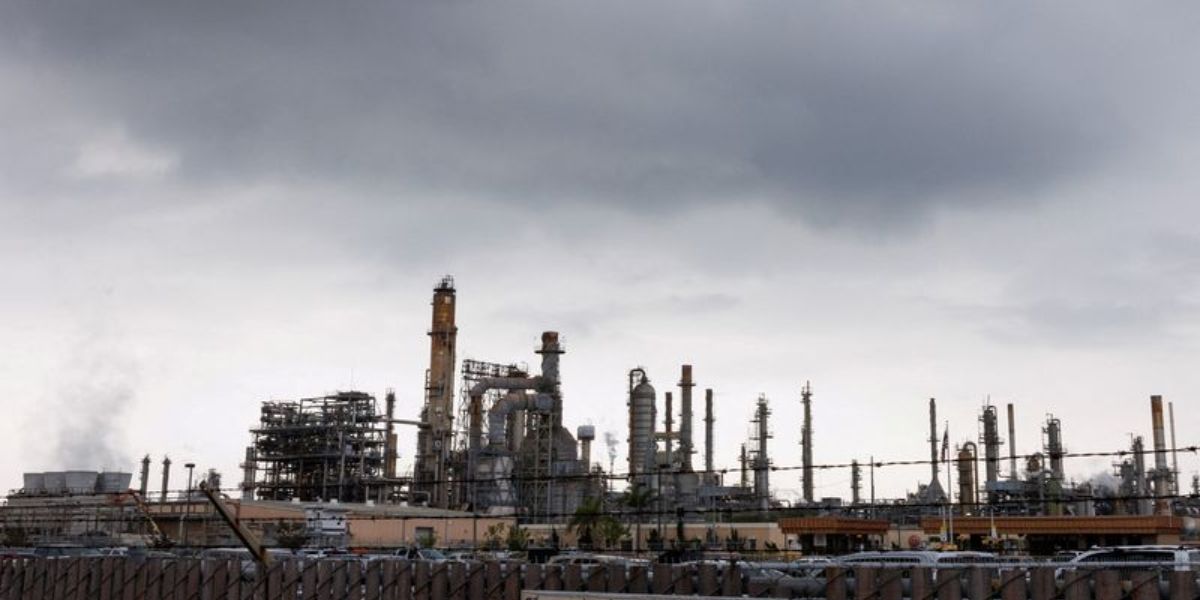NEW YORK — June 9, 2025 — California’s fuel imports surged to their highest level in four years this May, as the state leaned heavily on overseas suppliers to fill gaps created by refinery outages and long-term capacity reductions. With the closure of two major refineries on the horizon, experts say the Golden State is fast becoming structurally dependent on foreign fuel — a shift that may increase consumer costs but also reveal new trade opportunities.
According to shipping data from vessel tracker Kpler, California imported an average of 279,000 barrels per day (bpd) of petroleum products in May — the highest since June 2021. Of that, nearly 70% came from Asia, particularly South Korea, reflecting long-standing trading patterns tied to the West Coast’s isolation from major U.S. refining centers in the Gulf Coast.
“California’s refining capacity is shrinking faster than its fuel demand is declining, forcing the state into a long-term import-dependent position,” said Sumit Ritolia, an analyst with Kpler.
A State of Supply Stress
Recent outages at refineries operated by Chevron, PBF Energy, and Valero tightened supply across the West Coast, prompting traders to seek fuel far beyond traditional partners. According to StoneX analyst Alex Hodes, the outages significantly lifted prices in the Pacific Northwest, opening the door for more arbitrage imports.
On some days in May, San Francisco gasoline traded over $40 per barrel higher than Gulf Coast prices, nearly double the year-to-date average of $21, according to WoodMac analyst Austin Lin.
This widened price gap spurred shipments from unlikely sources. California imported a record 38,000 bpd from the Bahamas, a route rarely used by West Coast refiners, surpassing the previous high of 29,000 bpd in March. These volumes typically originate from U.S. Gulf Coast refiners and pass through the Bahamas to bypass the Jones Act, a law requiring domestic shipping between U.S. ports to be done on U.S.-built and -staffed vessels — of which there are only 55.
“Sailing from Texas to California via the Bahamas is usually uneconomical,” said a U.S. gasoline trading source, “but with prices so high, the arbitrage opened up.”
Imports from India and Alkylate Demand
The state also imported 39,000 bpd from India, the highest since January 2024. Much of that fuel included alkylate, a critical component for blending CARBOB gasoline, California’s specially formulated clean-burning fuel. Ample alkylate availability in the Atlantic Basin likely supported these imports, said Philip Jones-Lux, an analyst at Sparta Commodities.
Consumer Costs and Policy Implications
Analysts say the new reliance on imports — particularly waterborne — is likely to push fuel prices higher in California, where consumers already pay the most at the pump. On Friday, the average retail gasoline price in California was $4.68 per gallon, compared to a national average of $3.12, according to GasBuddy.
“More imports almost always mean more costs for California drivers,” said Patrick De Haan, a senior analyst at GasBuddy. “But the state’s ability to tap global markets could help prevent catastrophic price spikes when local supply falters.”
The expected closures of Phillips 66’s Rodeo refinery and Valero’s Benicia plant by 2026 have added urgency to this structural shift. Combined with strict environmental regulations, declining gasoline demand, and limited pipeline connectivity, the state faces a complex challenge: how to manage energy security while meeting climate goals.
How do you think California should balance clean energy goals with fuel affordability? Should the state invest more in refining or embrace imports? Share your thoughts in the comments below.




